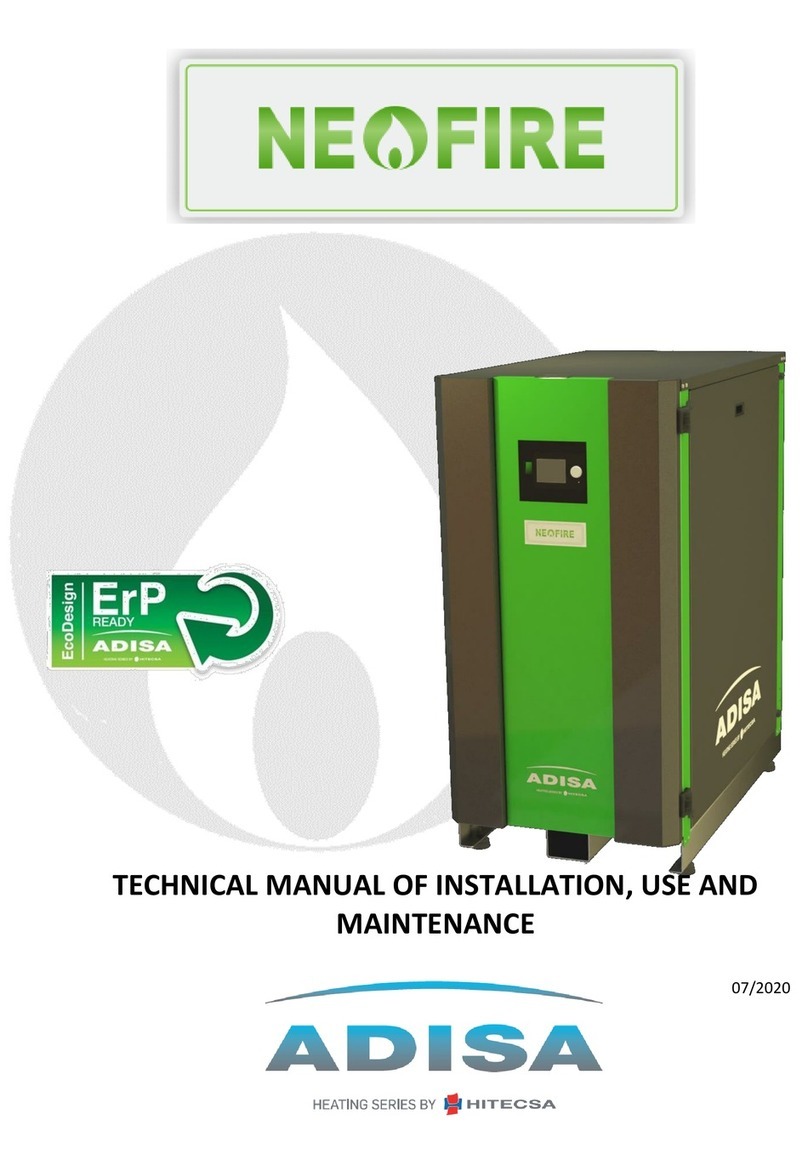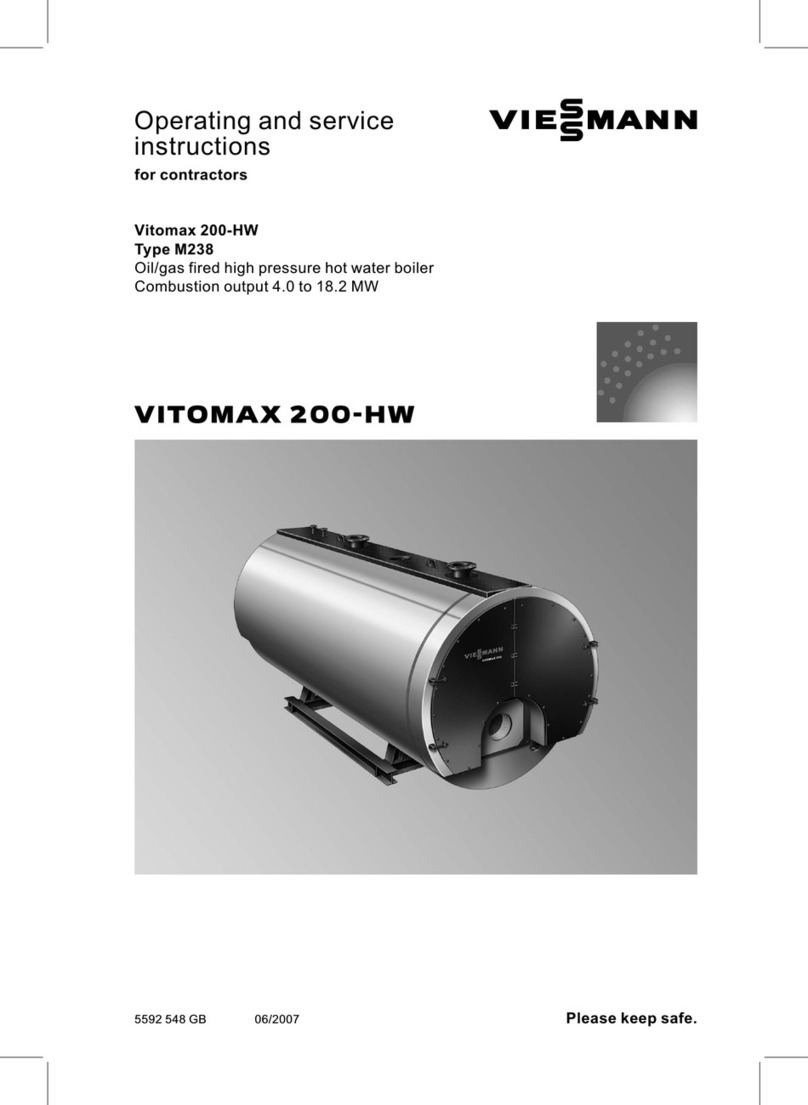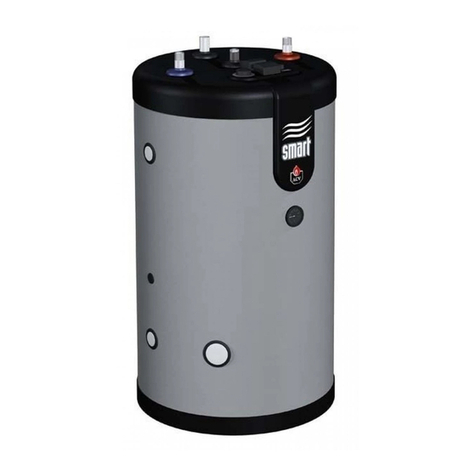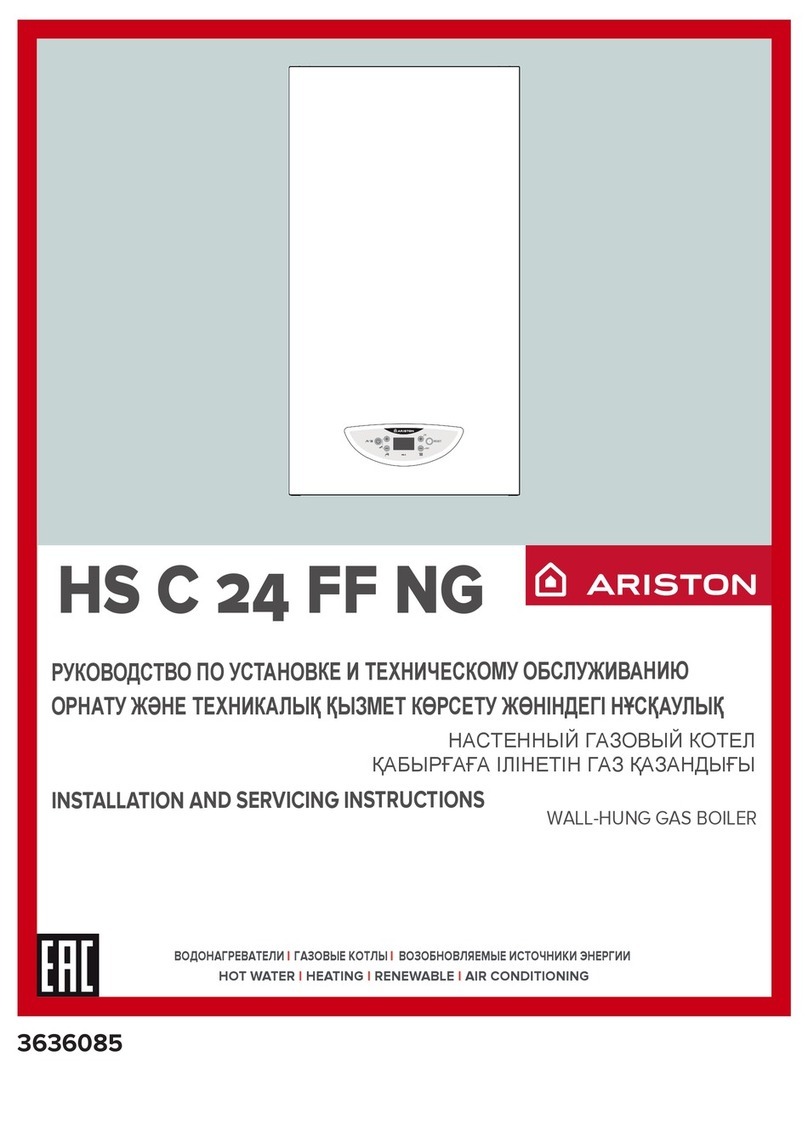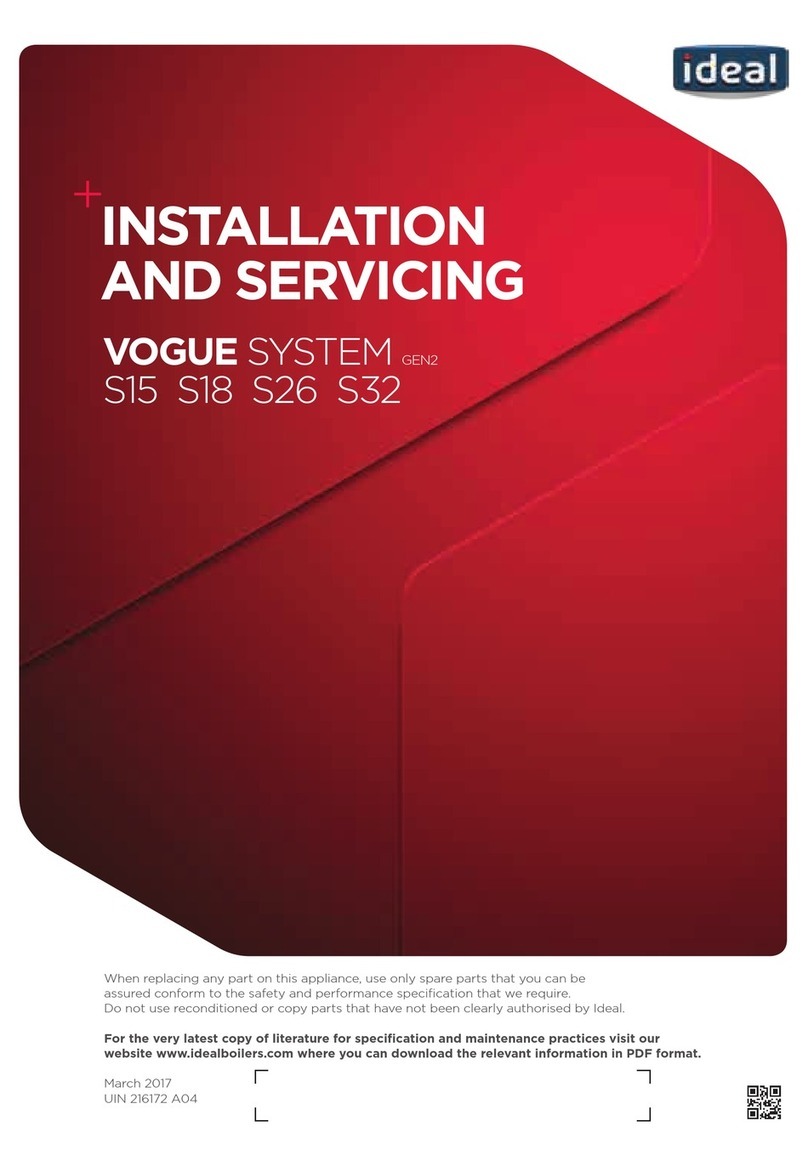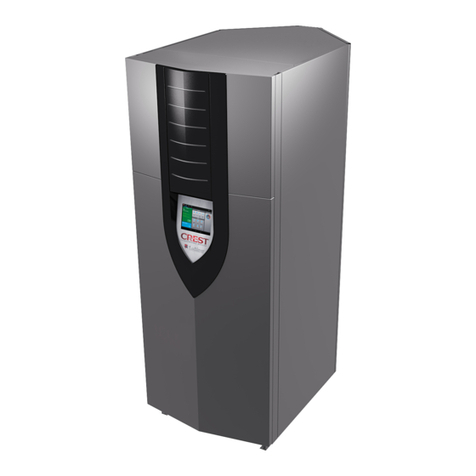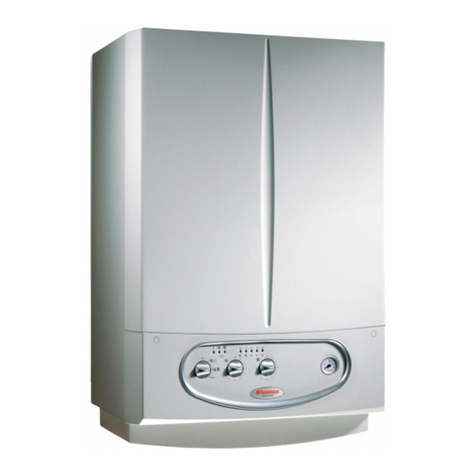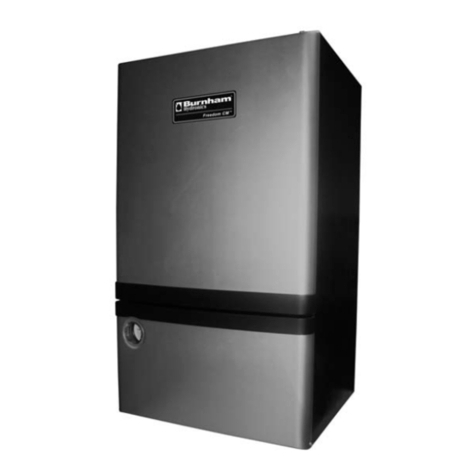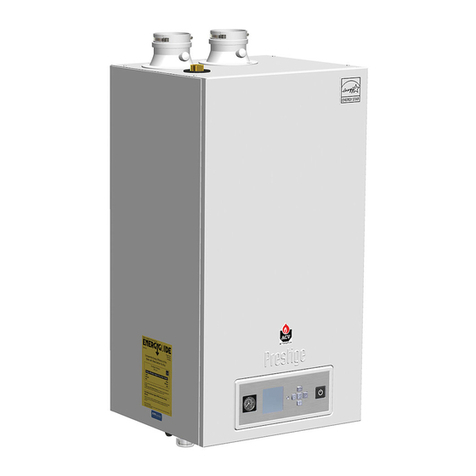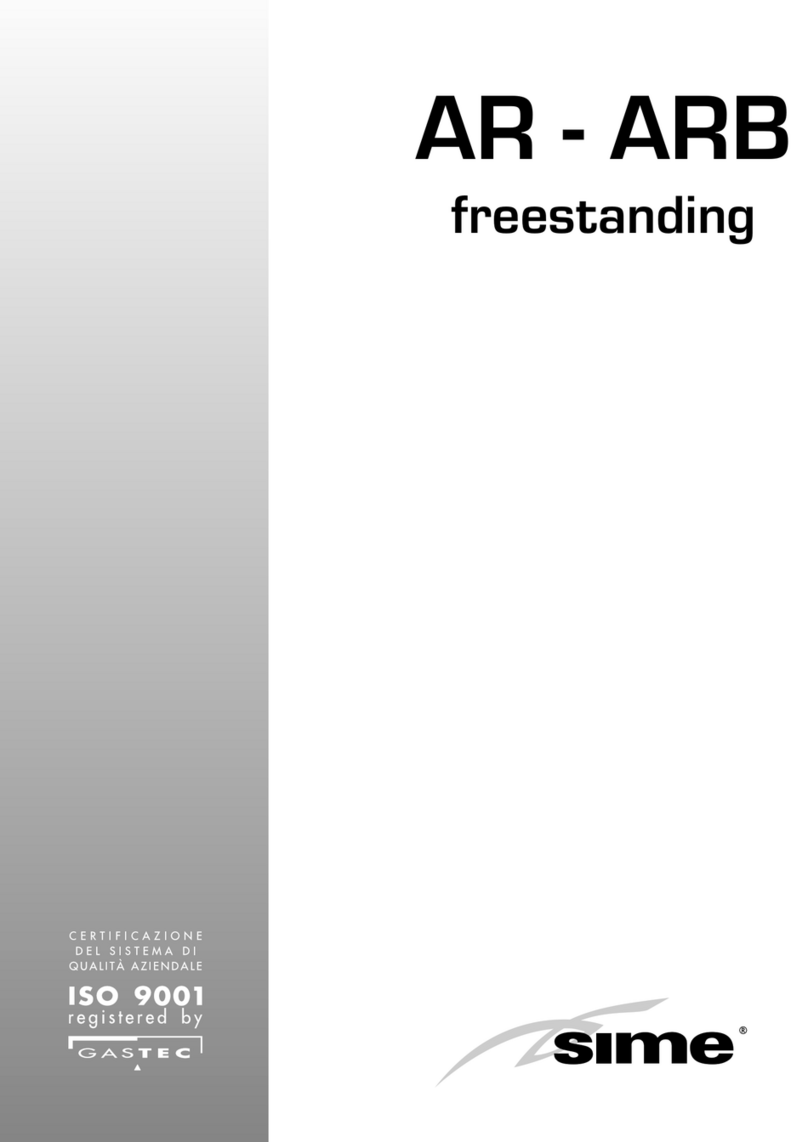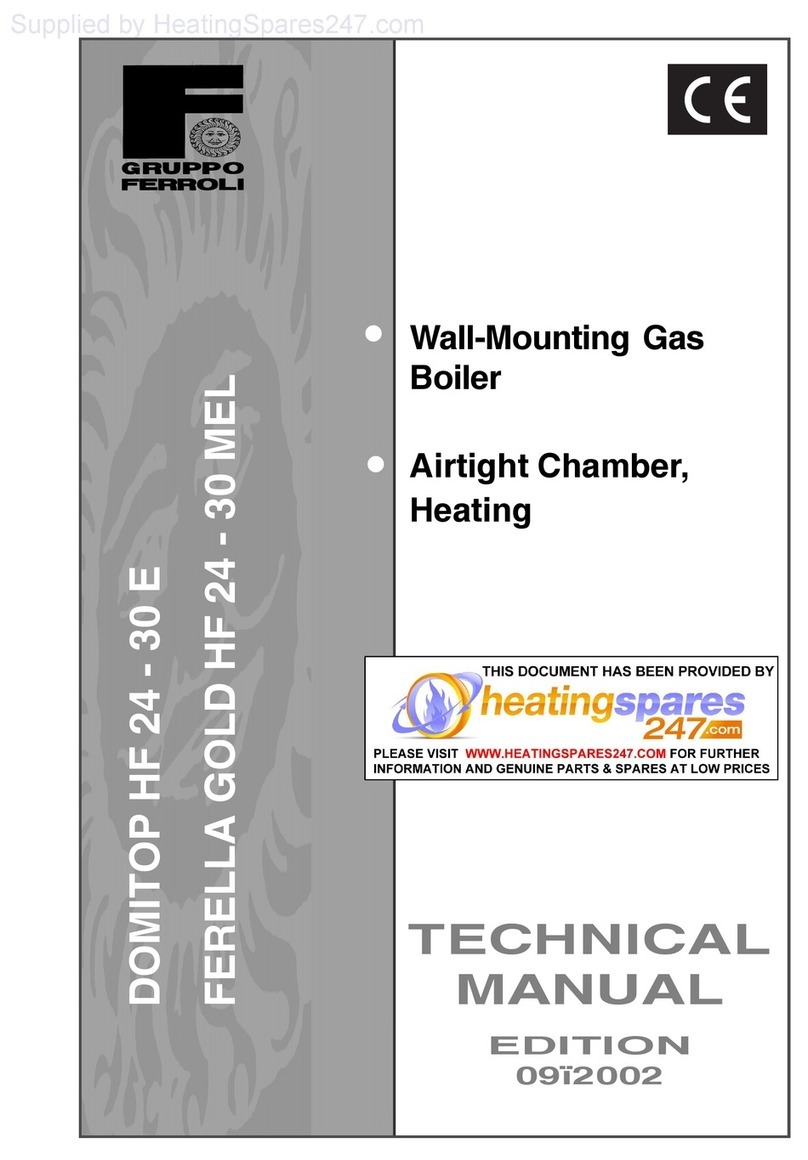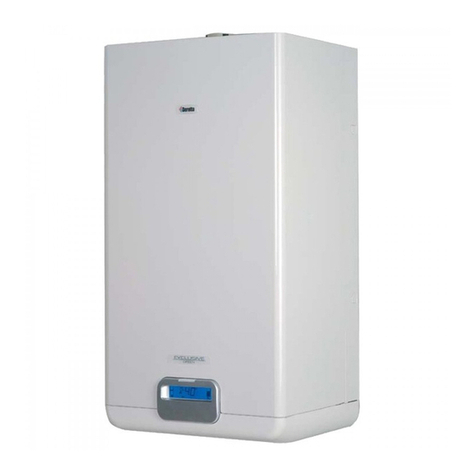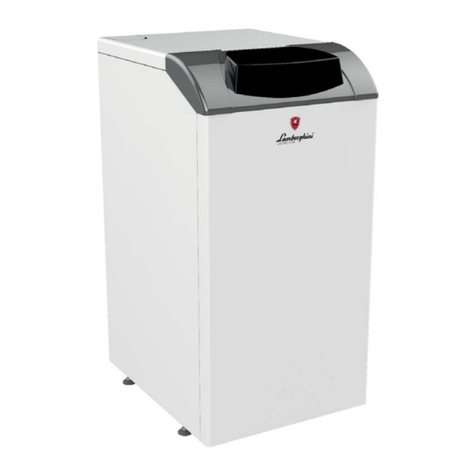
11
2.9.2 Lo / Hi / Lo Firing Rate Control Systems
These system firing rates are usually controlled by a hydraulically actuated valve system. High
firing rate is completely open and is not adjustable. Minimum firing rate is adjustable by
controlling the valve in low fire position. Consult the manual provided by the valve
manufacturer for instructions for this adjustment. Only highly qualified technicians will be able
to make this adjustment.
3.0 SAFETY AND CONTROL DEVICES
3.1 Flame Supervisory System
The boiler forced draft burner is supplied with a Burner Management System. This is a solid
state device consisting of sensors, relays, timers and switches. Its function is to safely manage
the firing system and to monitor all safety devices. The burner management system detects the
main or pilot flame, depending on the type of device, and controls the gas valves accordingly.
Its functions are strictly governed by Codes and are not accessible or adjustable. The flame
supervisory system must be tested to assure that it will shut off the main gas valves in case of a
boiler malfunction. Additional information including operating sequence and troubleshooting
information may be found in the manufacturer’s instructions in the Burner Manual.
3.2 Flame Detection System
Boiler burners are equipped with a flame detection system which, if a flame is not sensed or is
not sensed at the proper time, will automatically shut the boiler down by closing all fuel valves.
3.2.1 Flame Detection System Types
The flame detection system, is either the thermocouple type (such as a combination gas valve
or pilotstat), flamerod type, or electronic photocell type (such as the RA890 or RM7895). The
purpose of this device is to detect the pilot and / or main flame, depending of the type of
device. The device must be checked or proper operation. See the Burner manual for the
correct test procedure.
3.2.2 Automatic (Electric) Ignition Type
On burners equipped with automatic electrically-ignited pilots, follow the procedures described
in the burner manual and test the controls for proper operation.
3.3 Low Water Cut-Off
If the boiler operates without sufficient water, it could overheat and burn out the heat transfer
tubes. This very serious condition has been known to cause a boiler to explode. Boilers are
supplied with at least one float or electric probe-type low water cut-off designed to sense the
level of the water in the upper drum. It operates to shut off the burner if the water level drops
its set level. The low water cut-off must be operationally tested by manually lowering the
boiler water level [by opening the drain valve(s)].
The burner should cycle off when the water level drops below the actuation point of the low
water cut-off. When the water level is restored, the burner should cycle back on. Depress the
manual reset button of devices which require manual reset in order to restore the boiler to
operation. Carefully read the enclosed manufacturer’s literature on the installed low water cut-
off devices(s), particularly the sections on operation and maintenance.



















